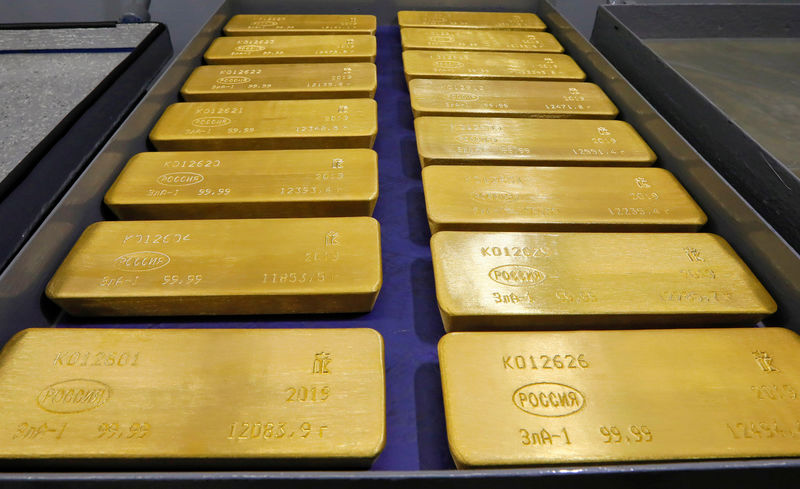 © Reuters.
© Reuters. Investing.com – Markets revolve around the question, When will the Fed stop? Three words control markets, lift gold, bring down the dollar and change the economic map, and these three words were primarily responsible for gold’s violent fall in Friday trading last weekend.
On Friday, we saw the impact of that rhetoric again as Federal Reserve Governor Christopher Waller, one of the biggest rate hawks, said he favors more monetary tightening despite evidence that US inflation is steadily emerging from the highest level in recent months.
Waller’s call helped spark a small slide in gold prices, which hit a new record high on Thursday. Higher interest rates benefit the dollar and hurt gold. Although the yellow metal is a common insurance against economic and political problems, it pays nothing.
Gold wasn’t the only commodity affected by Waller’s comments on Friday. After the International Energy Agency (IEA) raised its forecast for oil demand in 2023, the rebound from a one-year low was confirmed with only modest gains rather than big gains.
“The Fed’s hawkish comments have increased the risk of further tightening after May, and interest rates will need to stay higher for a longer period,” said Ed Moya, analyst at online trading platform Onda.
The central bank has added 475 basis points to rates over the past 13 months, peaking at 5% from 0.25% in March 2020 when the Covid-19 outbreak hit.
Before Waller’s comments on Friday, some economists were actually betting on the Fed to leave interest rates on hold at its next policy decision on May 3.
This is after expansion – the measure of inflation – at an annual rate of 5% in March and 6% in February. The PPI data also revealed a sharp slowdown in inflation rates. However, the path to the central bank’s target of 2% is still a long way off, raising fears of inflation and damage to the economy, as happened in the banking sector. This prompted economist Mohamed El-Erian to call for the central bank to revise its policy and inflation target to raise it slightly from 2%.
Also Read |
Also Read |
Gold: Market Solutions and Operation
Gold bulls’ dreams of a magical rally were dashed by the dollar’s rally from a one-year low on Friday, handing longs in the yellow metal their biggest losses in three weeks.
Trading ended at $2,017.70 an ounce, down $39.50, or 1.9%, on the day. The slowdown erased Thursday’s $30, or 1.5%, total gain in gold for June. Silver’s drop was the biggest one-day drop for gold futures since a 2.1% drop on March 31. In the current week, gold prices fell 0.5% in June.
It was down US$35.85, or 1.8%, at US$2,004.26. It touched a low of $1,992.46 during the session.
Before Friday’s surprise drop, gold bulls had their most upbeat period in less than a week, gaining more than $50, or 2.6%, in the three sessions between Monday’s close and Thursday’s close.
“In the short term, gold is going to be very volatile here in both directions,” said Onada’s Moya.
Despite the recent pullback for gold, Moya said there are ample reasons for investors to be positive about the safe haven.
He added, “The Fed’s hawkish comments have raised the risk that the central bank will tighten further beyond May and interest rates will need to stay higher for longer.” “To beat inflation, we need to see economic pain, which should support gold’s high price.”
Gold: Price Forecast
Sunil Kumar Dixit, Chief Technical Strategist, SKCharting.com said. Spot gold’s weekly close of $2,004 forms a so-called doji reluctance above the 5-week exponential moving average or EMA of $1,976.
Dikshit said: “Early next week, recovery of bullish momentum will depend on the ability of long positions to defend support areas at $1,992 and $1,988, and further declines towards $1,976 and $1,967 could be seen.”
“On the upside, spot gold should form a sustained break above $2020, followed by $2032, to resume the upside move, aiming for a retest of $2048 and $2055 at $2,073.
See also $3000 Gold Dream

“Award-winning beer geek. Extreme coffeeaholic. Introvert. Avid travel specialist. Hipster-friendly communicator.”
